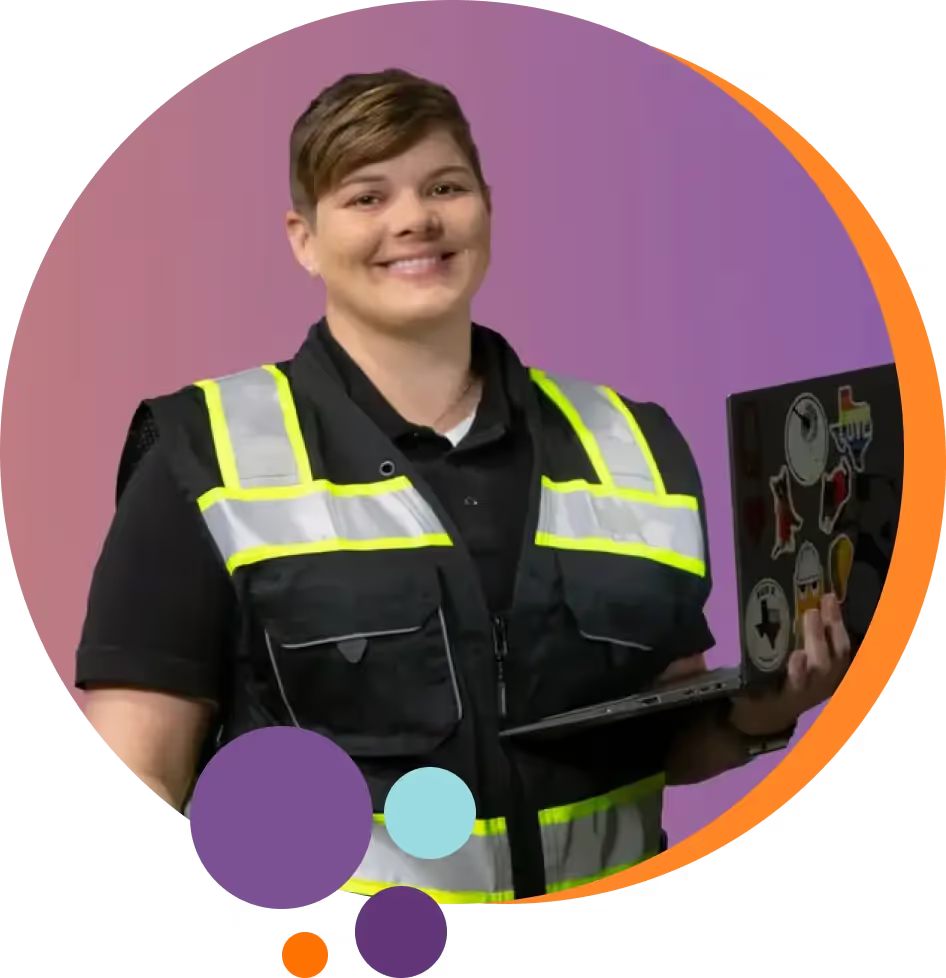With more and more students now opting for community colleges as their first choice because of the many benefits they offer, this is no longer the case.
So let’s start first by looking at why you should apply to community college.

Around 8.2 million students, making up 35% of all US undergraduates, attend 2-year community college. In this in-depth guide, we will not only take you through all the steps required to apply to a community college but we will also explain the benefits of choosing a community college over other options.
In the past, applying to a community college was seen as a backup option and students only did so if their applications to four-year university programs were declined.












































With more and more students now opting for community colleges as their first choice because of the many benefits they offer, this is no longer the case.
So let’s start first by looking at why you should apply to community college.
Unmudl offers courses you can take from anywhere

A community college or junior college is a two-year program that is primarily concerned with supporting its local community by providing education that directly impacts their chances of getting employed faster or moving up the career ladder quickly.
Community colleges are public institutions meaning they are subsidized by the government, offering affordable education to students who can’t afford a full four-year university degree. Yet, if you play your cards right, you can get an associate’s degree at a community college and convert it to a bachelor’s degree later by transferring credits.
There are a wide variety of courses offered at community colleges but the three popular options are:
One month to six-month certificate courses designed for students to acquire practical job skills and get employed quickly like plumbing, woodworking, gardening, and similar jobs.
A two-year program that can get you qualifications for either:
This is rare as only a small percentage of community colleges offer a four-year bachelor’s degree program. If you are interested in getting a bachelor’s degree from a community college read our in-depth guide on how to go about it.
However, many students after completing their associate’s degree at a community college, at a fraction of a cost, transfer credits and convert it to a bachelor’s degree at another university.
Here are the key benefits why students are opting for community colleges:
The average community college has 25 to 35 students compared to a university class which may have anywhere from 150 to 300.
Now some students may prefer larger classes but the fact that smaller classes give more opportunities for students to interact with teachers can be a deal-breaker.
Imagine if you already have a full-time job, or you are a parent… juggling all of those personal matters and then college-level education too. The smaller classes at community colleges give the student more access to instructors.
In fact, students in smaller classes generally have a better relationship and opinion of their teachers because they engage with them more.
Is it hard to get into a community college? No. Because community colleges are public schools with a mandate to uplift their communities they have an open admission policy. This means that if you meet the minimum requirement of having a high school diploma or GED you can get admitted.
Does GPA matter in community college? Yes. Community college does not mean that there are no entry standards at all, you have to have a minimum GPA of 2.0 to 2.5 depending on the college as well as math and English levels which are required for college-level studies.
Still, in case you miss the mark on any of these, most community colleges will ask you to attend remedial classes rather than outright reject you.
Read: Do Community Colleges Accept High School Dropouts?
Some students know exactly what they want to do with life. My friend in high school knew he wanted to be a cardiologist since he was 7 years old. For the rest of us, figuring out what we want to commit to for the rest of our lives is not so easy.
The good news is that because community colleges are more affordable, you can test the waters by signing up for a course and see how you feel about it.
If you feel like the course isn’t right for you, community colleges allow you to switch your major… just don’t wait till your second year to do it.
Read: Can You Take Just One Class at Community College?
As mentioned earlier, community college is your best option if you are aiming to become a nurse, dental hygienist, car mechanic, police officer, technician, etc.
None of these professions require you to have a four-year bachelor’s degree and you can start earning as soon as you finish your certification or get your associate’s degree.
Tip: For a list of certifications that will help you land a job quickly visit the Unmudl database for courses offered at community colleges nationwide.
Alternatively, many currently employed people who are unhappy with their jobs for whatever reason use community college to change their careers and find something that makes them happier. Here is an excellent article that shows you how to change careers using community college.
Since the objective of every community college is to help its surrounding community find better opportunities, they are designed to offer solutions against things that typically become hurdles in that endeavor.
For example, all community colleges have flexible schedules to accommodate students with existing jobs. This way you don’t have to compromise by giving up your current job to learn a new skill and change your career.
Additionally, there are childcare options for parents and tuition assistance for those who can’t even afford to pay the already subsidized fee (you have to meet certain criteria for this and it varies from scholarship program to scholarship program).
Did you apply to a four-year university program and get rejected because of a low GPA? Well, don’t panic, it’s not the end of the road yet.
If you are committed to getting into university then you can still get into community college, get a two-year associate’s degree with a better GPA, and then transfer to a university. You may be surprised how many students do this exact thing to get back on track with their higher education.
There is something you must look out for though - make sure the university you plan to get into accepts transfer credits from the community college you are planning to apply to.
This can be checked easily by calling up the university and talking to one of the student advisors there.
There are two ways you can save on tuition or those punishing student loans. Compare the tuition for the various options mentioned below:

Tuition for a private four-year college costs almost ten times more than a public two-year college! If you can’t afford that then just get your associate’s degree and start your professional career.
If you are determined to get a bachelor’s degree then one smart way to get it and still save on a lot of tuition is to complete the first two years of your intended major at a community college at a tenth of the cost. This will land you an associate’s degree.
As mentioned earlier as well, you can then take this degree and transfer to a university program to get your bachelor’s, saving you a good chunk of tuition costs.
Related: Which states offer free community college?
.jpg)
Now that you understand what community colleges are and how much you can benefit from studying at one, here is our complete guide to help you apply.
Just follow the steps and make sure to review the tips we have for you at the end.
Picking an accredited community college is not as complex an exercise as picking a 4-year university program. Since community colleges are open to all you can generally apply to one that is closest to you. This is usually the case since students are commuting from home to take classes.
If you are applying to a very specific program that is not offered at a community college in your locality then you might have to look further away. The best way to do this is to go to the website of community colleges near you and search for the ones that are offering your course.
Alternatively, a better way is to search Unmudl for a community college nationwide.
Whatever the case is, you should definitely visit the college. Most of them give you official tours of the campus and the facilities.
Check out: Do I Need a Laptop for Community College?
If you are planning to apply for federal financial aid with FAFSA, you have to keep in mind the application dates for the program. Because FAFSA starts taking applications on January 1 of each year, you have to apply as soon as you have picked your community colleges.
This might even mean applying for FAFSA before applying to the actual community college. This is very important because even the U.S. Department of Education’s application guidelines strongly urge you to apply early so that you don’t miss out on that year’s available financial aid.
If you decide on a college that was not part of the original list when applying for FAFSA, don’t worry, you can always log in to the FAFSA portal and add the new choice of college. Ideally, however, you should sort out your list of community colleges before applying to keep things smooth.
In addition to FAFSA, there are many other scholarship programs that you might be eligible to apply for as a US citizen. Your advisor at the community college you are applying to will be able to help you with the ones you might be eligible for. As is the case with all scholarship programs, apply as soon as they start taking applications for the year.
Related: Do Community Colleges Have Payment Plans?
Depending on what state you are in, you will have to fill out the online application form. One of the most frequently asked questions is how to apply to a community college in California. States like California have a single system to apply to any of the colleges within that state. It’s called CCCApply and is very easy to use. Similarly, the State University of New York also has its central application system called SUNY.
Most colleges, however, have their own application form that you need to fill out if you want to apply to that college. All these application forms are more or less the same and ask for your basic information such as your full name, address, nationality, residency, the high school you went to, and what you want to major in.
They will also ask you for your intent which means whether you want to apply for certification and enter the workforce, an associate’s degree, or an associate’s degree with an intent to convert to a bachelor’s degree.
Related: Quickest Way To Enroll in a Community College
.jpg)
Unlike four-year universities, community colleges don’t ask you to submit SAT or ACT scores. You just need your high school diploma or GED. In case you haven’t received your diploma yet, you can ask your high school to have transcripts mailed to the community colleges you are applying to.
If your certificates or transcripts are from a school outside the United States then you need to have them evaluated by a recognized credential evaluation agency. This is done to determine equivalency to US standards.
If you are applying to a community college in the same state as your residency the smart thing to do is to provide some proof of residence. This will have a big impact on your tuition. Remember the tuition chart we shared above? Note the huge difference between in-state and out-of-state tuition.
In most cases, if you studied for more than a year at a high school within the state then your high school diploma is all you need. Otherwise, you will have to prove your residency using alternate documentation. Any document that shows you have been in the state for more than a year like a driving license, vehicle registration, voter registration, state or federal tax returns from a local address, etc.
Of course, if you are not independent and are dependent on a parent or a guardian then the documentation should be from them.
Some states require that community colleges ask for immunization records for all full-time students taking twelve or more credits to ensure they have been vaccinated against specific diseases.
You may be asked to show immunization for the following, but get in touch with your college to see what exactly they require from you.
As I mentioned earlier, you don’t really need to do SATs or ACTs to get admission to a community college. However, most, if not all, community colleges ask you to take an academic skills assessment test. This is usually a test of your math and English language abilities.
The reason why these two skills are tested is that they lay at the foundation of any education program, and weaknesses in these skills need to be addressed before you will be allowed to take higher-level classes. If you wish to skip this test you can do so by getting a decent SAT or ACT score.
This may vary from school to school but the generally accepted scores for SAT are 450 each on Reading and Math. For ACTs you need to get a 47 on English and Reading combined and a 22 on math.
The good news is you will not likely get rejected if you score low on these placement tests. You will simply be asked to take remedial classes to help you catch up with the rest of the class.
Related: Do Community Colleges Really Accept Everyone Who Applies?
.jpg)
If you have completed the seven steps above it is time to go meet your community college advisor. Every college has one in one form or another and he or she can be the most important person at the college. The advisor’s job is to guide you not just through college but with your plans post-college as well.
During your term with your college, they can help you pick a course based on your interests, guide you with outcomes for the choices you are making, help you with electives to strengthen your resume, guide you to which courses will help you land a job in your local community and so much more.
In addition to helping you with college, the advisor can also help you with your plans after college. For example, if you plan to convert your associate’s degree to a bachelor’s at a university, they can help you to find universities that will accept transfer credits from your college.
Remember we asked you to take a tour of the college before you apply to it? Well, once you do apply and get admitted you will need to take an orientation. The difference between the two is that the earlier is more about ‘life at the college’ while the latter is more about arming you with the knowledge to help you navigate your way around your college as an enrolled student.
These orientations last for about a day or two and will introduce you to campus resources, amenities, clubs, policies, how to register for classes, help you set up your online account, etc.
Yay! You made it all the way to the last step. All that is left is to register for the classes you intend to take. A couple of important points to discuss here. Don’t come under any peer pressure to take more classes than you can handle. The best thing about community college is you can pace yourself based on your specific demands from life.
Do you have a full-time job? Are you a parent? Do you struggle with your studies?
Pick only as many classes as you think you can take and get a good grade in. Graduating with a good GPA will be far more beneficial to you than rushing through college quickly.
FYI, the average for a college student is 15 credit hours per semester (that’s five 3 credit hour classes). You can, if you want to, take 18 or more credits per semester, but anything more than 18 credit hours usually require departmental approval.
Related: How Long Is Community College?
Before you leave, we just want to quickly remind you of the three Dont’s of applying to community colleges.
You will hear people tell you that you can apply to community colleges even up to the last two weeks. Technically, yes you can. But, with more and more students opting for community colleges there is now a real possibility that your college may close admissions if they have too many applicants.
So, do find out when your college opens applications for the next term and apply ASAP.
Sending incomplete forms or any required documents will cause delays and may result in you missing the term. Community college applications and document requirements are very easy. If you plan you can easily manage to submit everything properly.
As mentioned earlier, FAFSA itself tells you to apply as soon as possible. A good rule of thumb is to start researching your scholarship options in the last year of high school. Submit FAFSA in January and mention the colleges you are applying to.
If you are late doing this, go to your college advisor immediately. They will help you with what needs to be done saving you months of research and running around.
Related: How to Dropout of Community College
Applying to community colleges is far more simple than applying to a university. However, the important thing is time. Take the appropriate step mentioned above at the right time and you will soon be studying at a college of your choice without any problems.
That’s it! If you have been following this guide as you go through the application process then you are all done with the entire process for applying to your community college. Congratulations, and we wish you all the best with your studies!